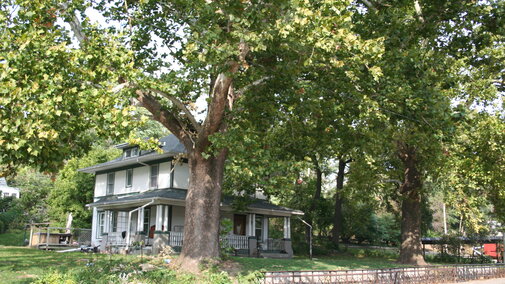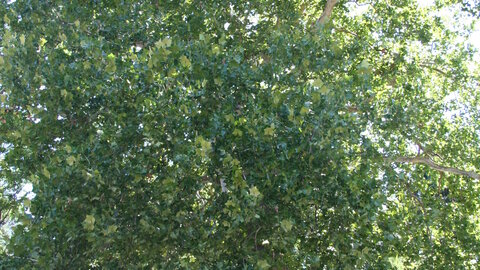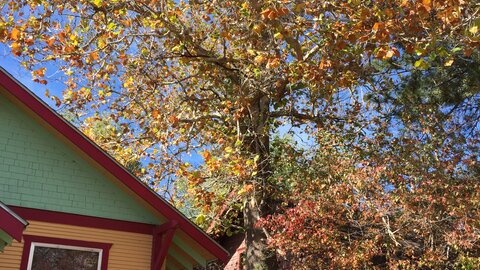Platanus occidentalis
,
Deciduous
Origin:
Native to Midwest
A tree that can warm your heart even on the coldest day of winter is the American sycamore (Platanus occidentalis). American
sycamore is also known as American planetree, buttonwood and buttonball tree. American sycamore is native to 36 states, including
Nebraska. You can go to just about any eastern Nebraska community and find at least a few larger sycamore trees. On farms it was (and
still is) often planted for shade.

Where To Grow
Sycamore is usually found in the rich bottomland soils associated with rivers and streams. It is very adaptable to a wide range of
soil conditions. Its large spreading form is ideal for larger homes and farm properties. Never plant this tree in small spaces.
Size at Maturity
Tree Height
Tree Spread
60-80'
50-60'
Wildlife Benefits
Several wild birds including purple finch, goldfinch, chickadees, and dark-eyed junco eat the seeds. Larger trees in forested areas make
excellent nesting habitat for birds including wood ducks.
Additional Considerations
The tree is surprisingly drought tolerant when established. The
species is prone to anthracnose, a common fungal disease that can stunt and abort leaf production in moist springs. The disease is mostly
a cosmetic issue, rarely causing any harm to trees and which typically is forgotten by summer when leaves fully emerge. Sycamore produces
distinctive brown, 1” seed balls, born singly on a 3-5” long stringy stalk and which hang on the tree all winter long.
Interesting Facts
In southern Ohio, the story is often told of a group of horsemen who found shelter during a severe storm in the hollow base of an old
sycamore. They were able to shelter not only themselves but also their horses.

